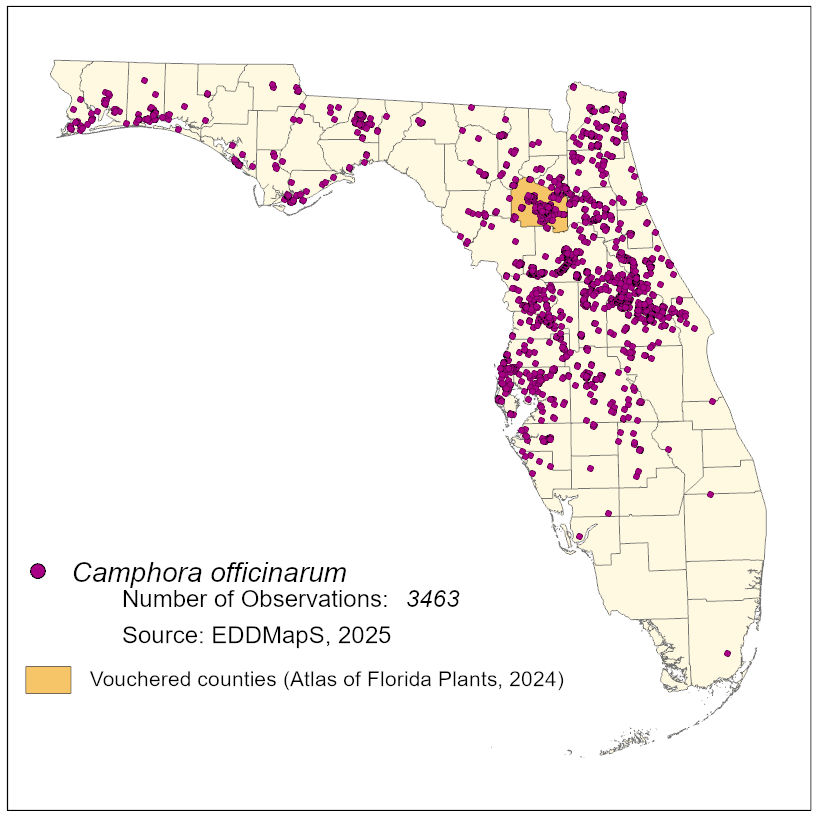Common Name: camphor tree
Family: Lauraceae
Common Synonyms: Cinnamomum camphora
USDA Hardiness Zone: 8a-11
Growth Habit: Tree
Origin: Eastern Asia
FISC Category: 1
FDACS Listed Noxious Weed: No
Introduction Date: Earliest Florida specimen vouchered in 1890s
IFAS Assessment:


Evergreen tree to 20 m tall. All vegetative parts glabrous, and have strong aroma of camphor. Leaves glossy dark green above and glaucous below, simple, alternate, slightly wavy margin, ovate, 4-10 cm long and 2-5 cm wide. Small flowers, greenish-white to cream colored, in loose panicles. Fruit a small, subglobose, black drupe.
Mesic hammock, upland pine, scrub, scrubby flatwoods, floodplain forest, upland hardwood forest, disturbed areas
Abundant fruits are bird-dispersed.

NA
Dave's Garden. 2014. PlantFiles: Camphor Tree, Cinnamomum camphora. http://davesgarden.com/guides/pf/go/54395/. Accessed on June 20, 2014.
IFAS, Center for Aquatic and Invasive Plants. 2014. Camphor tree. http://plants.ifas.ufl.edu/node/101. Accessed on June 26, 2014.
Langeland, K.A., H.M. Cherry, C.M. McCormick, K.C. Burks. 2008. Identification and Biology of Non-Native Plants in Florida's Natural Areas-Second Edition. IFAS Publication SP 257. University of Florida, Gainesville, Florida.